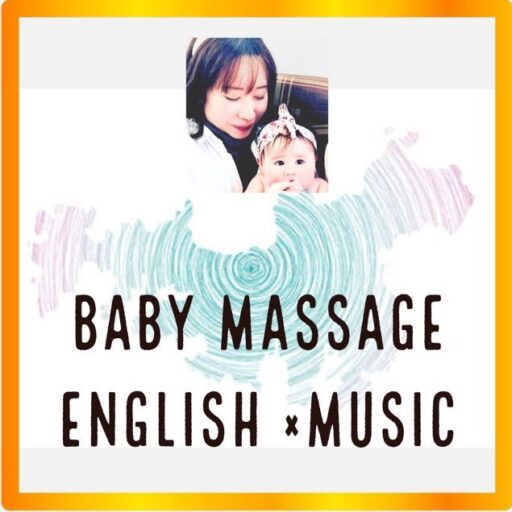0〜3歳のおうち英語、
「興味はあるけれど、何から始めたらいいの?」
という声をよく聞きます。
絵本?動画?フラッシュカード?
どれが正解なのか迷ってしまいますよね。
今日は、ニュージーランドで保育士として働き、
そして今は高崎で0〜6歳のお子さんとその親御さん中心に
英語リトミックとモンテッソーリ英語クラスを開催している私から、
モンテッソーリ的に「これだけまず知っていれば大丈夫!」という最初の一歩をお話しします。
🌱 STEP 1:英語は “聞かせる” よりも “感じられる” 環境づくり
モンテッソーリ教育では、
子どもが自分から動きたくなる「環境づくり」をとても大切にします。
おうち英語でも同じで、
まずは“英語が当たり前にある”環境を、ゆるく用意するだけで十分。
例えば、
- おむつ替えの時に “Up, up!”
- お風呂で泡を触りながら “Soft!”
- お散歩で犬を見つけたら “Doggie!”
こんな短い一言でOK♡
英語を「教える」のではなく、皆様の生活のリズムにそっと添えるイメージです。
🌱 STEP 2:モンテッソーリの「手を使う活動」と英語をリンクさせる
0〜3歳は、“手を動かすこと”が発達そのもの。
モンテッソーリでも「手は知性の道具」と言われるほど大事にされています。
ここに英語を少し乗せると、
驚くほど自然にことばが入っていきます。
例:
- ビーズをつまむ → “Pinch!”
- 落とす → “Drop!”
- 紐を通す → “Through!”
- ペグを入れる → “In!”
動作と言葉がつながることで、
子どもは英語を「体で理解」していきます。
🌱 STEP 3:できた!が増えると英語も好きになる
私のクラスに通ってくれているお子さんたちを見ると、
英語が好きになる瞬間って
“英語がわかった時”ではなく、
「自分でできた!」と感じた瞬間なんです。
りんごを並べられた
紐が通せた
ビーズが落とせた
—そのすべてが自信になり、英語への前向きさも自然に育ちます。
モンテッソーリと英語の掛け合わせがいいのは、
まさにこの“できた!”が増えるところ。
だからこそ、0〜3歳のおうち英語は
「大量の英語入力」より
“手を使う小さな成功体験”がカギなんです。
🌱 STEP 4:ママが楽しむことが最強の英語教育
たくさん準備しなくて大丈夫。
完璧を目指す必要もありません。
ママが少し楽しそうに
“Look!” と言ってみたり
ママ自身がちょっとワクワクしたら
それが一番子どもに伝わります。
おうち英語は、
“英語を鍛える”というより
ママと子どもの“共有する時間”そのもの。
英語は、その時間をより豊かにするための
小さなスパイスのような存在です。
🌱 最後に:モンテ×英語の「最初の一歩」はゆるく、やさしく。
0〜年長さんの英語は、
早さでも量でもなく、
経験と感覚がすべて。
まずは
✔短い英語の声かけ
✔手を使う活動に英語を添える
✔できた!を大切にする
この3つができれば、もう十分すぎるほど◎
それが1年、2年と重なっていくたびに
お子様のアウトプットに変化が見られます。
日本語を教えるように、英語も一緒に伸ばしていきましょう☺️
これからも、おうち英語とモンテッソーリの視点から
楽しく、心が軽くなる情報をお届けしていきますね。
🇳🇿 English Version
**“Where to Start with English for Ages 0–6?
Your First Montessori Step”**
I often hear parents say:
“I want to start English at home… but what should I do first?”
Books? Cartoons? Flashcards?
It’s easy to get lost when searching for the “right way.”
As a former early childhood educator in New Zealand
—and now a teacher in Takasaki offering English rhythm classes and Montessori-inspired sessions for babies and toddlers—
I’d love to share the simplest Montessori-approved first step.
🌱 STEP 1: Create an Environment Where English Is Felt, Not Taught
In Montessori, the environment invites the child to act.
This applies beautifully to home English, too.
Just sprinkle English into daily life:
- During diaper change: “Up, up!”
- In the bath: “Soft!”
- On a walk: “Doggie!”
Short, playful words are enough.
It’s not about teaching English—
but letting it live gently in your home.
🌱 STEP 2: Pair English with Montessori “Hands-on Activities”
For ages 0–3, hands lead development.
Montessori calls the hand “the tool of the mind.”
When you link actions with short English words,
language becomes something the body understands.
Examples:
- Pinching beads → “Pinch!”
- Dropping → “Drop!”
- Threading → “Through!”
- Placing pegs → “In!”
Movement + language = natural learning.
🌱 STEP 3: When “I did it!” grows, English confidence grows too
In my classes, children start liking English
not when they “understand” the words—
but when they feel proud of themselves.
They thread a string,
place an apple piece,
drop a bead—
each success builds confidence and curiosity.
This is why Montessori × English works so well:
it increases these tiny “I did it!” moments.
For ages 0–3,
hands-on success >大量の英語インプット。
🌱 STEP 4: When Mom Enjoys It, English Blooms Naturally
You don’t need perfect pronunciation.
You don’t need long activities.
Just enjoy tiny moments.
A playful “Look!”
A shared smile.
That’s real English learning.
English becomes a spice—
something that enriches the time you already share.
🌱 Montessori × English: The First Step Is Always Gentle
For ages 0–3, what matters is not speed or quantity—
but experience and connection.
Start with:
✔ short English cues
✔ linking words with hand movements
✔ celebrating small successes
With this alone, your home English journey has already begun beautifully.
I hope to keep sharing warm, encouraging ideas
to help your days feel lighter and more joyful.

コメントを残す
コメントを投稿するにはログインしてください。